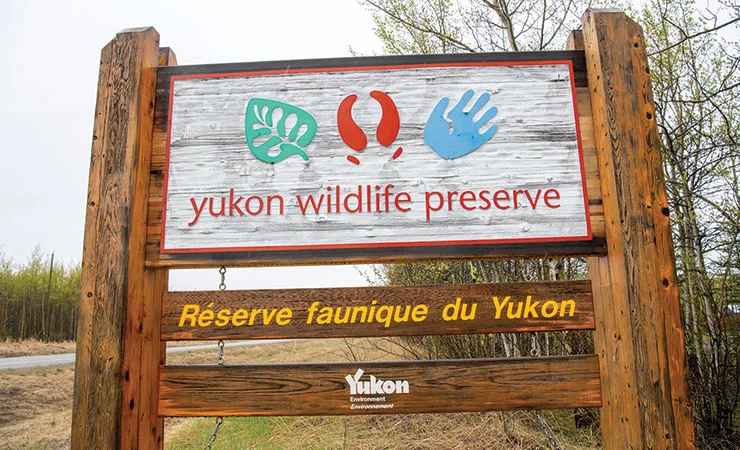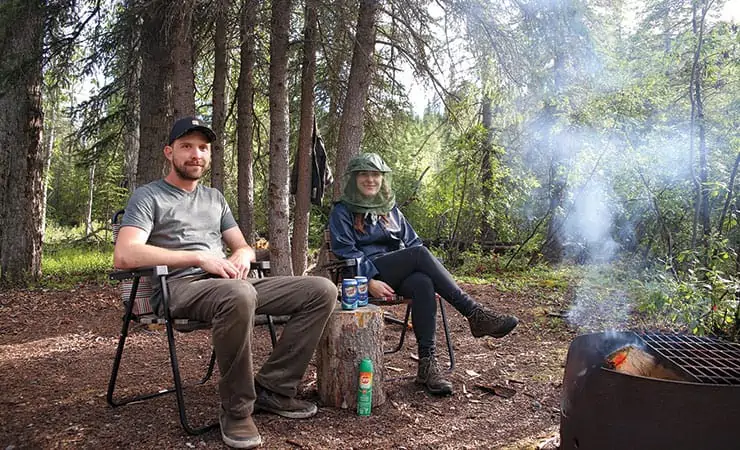t can happen to anyone. You forget to set the alarm, you sleep in, you miss an important flight.
But when you’re a migratory bird, missing your southbound flight in the fall could have disastrous consequences.
So when Doug and Yasmine Hannah found a mature sandhill crane wandering in the woods near their farm home outside Faro last fall, they knew it was in trouble.
For one thing, the huge flocks of cranes that overfly Faro twice a year had already left for their winter homes.
For another, cranes aren’t supposed to be in the woods. They prefer more open spaces.
The Hannahs took the bird to the recently-opened Research and Rehabilitation Centre at the Yukon Wildlife Preserve (YWP).
“He didn’t have a fracture, he didn’t have any obvious injuries. His wings were completely proportional, he was holding them right,” the preserve’s veterinarian, Maria Hallock recalls.
“He wasn’t limping, nothing was wrong with his head. Everything was fine, he was just really thin.”
Hallock suspects a soft tissue injury may have caused the metre-tall bird to stay behind when its flock mates left.
“So I was suspecting he had a muscle injury or a tendon injury that could keep him from flying. Because it would hurt, so after awhile he couldn’t fly to find food, he lost weight and he was getting weaker.”
Now, after a winter in a 2,800 cubic-foot enclosure at the rehab centre, the crane is ready to try his wings in the wild again.
Appropriately, he will be released this weekend at the 9th annual Crane and Sheep Viewing Festival in Faro.
Hallock is confident the bird—unofficially an “it”, since there is no way to determine its sex, apart from an invasive endoscopic examination, or DNA analysis of a feather—will make the transition successfully.
When it first arrived at the centre, the bird was so thin Hallock could feel its breast bone. That’s no longer the case, thanks to an unexpected diet the bird selected for itself while in residency at the centre.
“They’re supposed to be grain eaters. They eat grain, they eat insects, they eat small mammals, they eat amphibians, whatever they can catch,” Hallock says.
Rehab centre staff tried to interest the bird in a variety of edibles, without success. It turned out to be a very picky eater.
“We have tried everything. We got different types of grain. We got special giant mealworms, he would not touch them. Pieces of meat, pieces of chicken, pieces of mice, whatever we offered, he would not touch anything but fish,” she says.
“So, if that’s what he wants, that’s what we give him, and he’s doing fine.”
Doing fine, and apparently ready to take to the skies.
When it first arrived at the centre, the crane could do little more than walk around, flapping its wings and hopping.
Just after Christmas, Hallock says, it began making short forays a few feet above the floor of its enclosure.
“But lately, in the last couple of months, he’s been doing circles around the room. He does a couple of circles, lands and then goes again.”
The bird’s altitude has also increased.
“There is a light cover on the ceiling, and even though the ceiling is very high, he flies right up there, and once in awhile he hits that and knocks the cover off. So he can fly, no problem.”
But will the bird know enough to flock with others of its feather when it is released this weekend?
Apparently, thanks to two large mirrors in the enclosure, the bird already thinks it is in the company of other cranes.
“He can see himself, and he doesn’t know that it’s him. He thinks there’s another crane there. That’s his favourite area,” Hallock says.
Besides, she says, the instinct to be part of a flock is so strong it would never forget.
“He doesn’t have to be with them to know where he belongs, so I don’t expect any problem with that at all.”
Faro was picked as the release site because of the thousands of sandhill cranes that fly past on their northerly migration.
“There’s lots of flocks going through there at this time of the year, so he would have a choice. If he didn’t want to go with one, he could always go with another one.”
The Crane and Sheep Viewing Festival starts Friday evening with a dinner and musical entertainment, followed by a film
On Saturday, there will be a variety of nature walks and tours to the best sites for viewing both the migrating sandhill cranes and the area’s indigenous fannin sheep.
There will also be a free wild game barbecue, and a keynote talk by Yukon bird expert Dave Mossop, who recently returned from northern field work in the northern territory.
The event winds up Sunday afternoon with a bird-viewing walk to the sewage lagoon, followed by a Mother’s Day walk for breast cancer awareness.
“It’s a wonderful weekend,” says Erica Ward, executive assistant for the Town of Faro.
“It’s great because there’s really a sense of community involved.”
More information is available by phoning the town office, 994-2728, or by email to [email protected].




